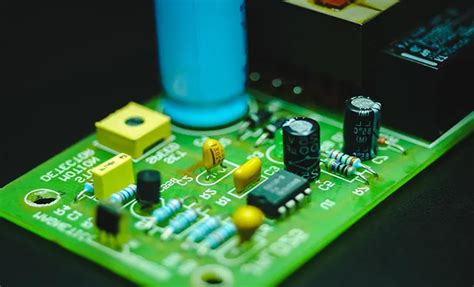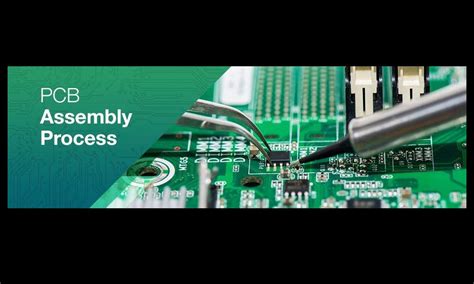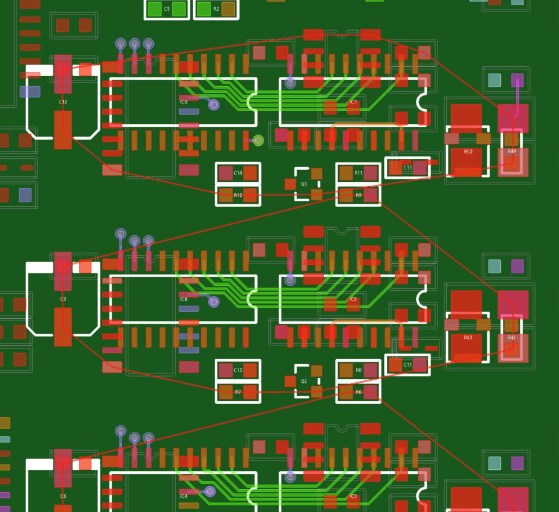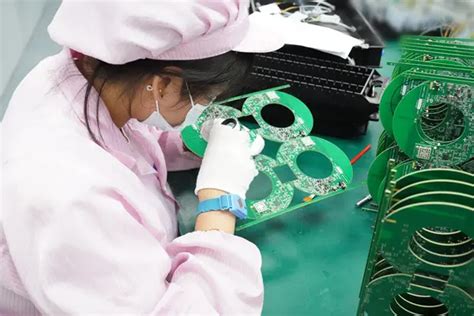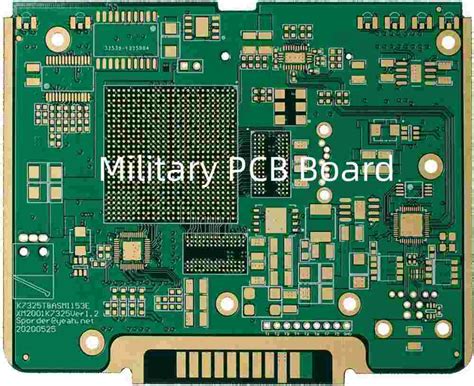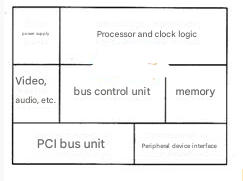Affordable Low-Volume PCB Prototyping for Tight Budgets
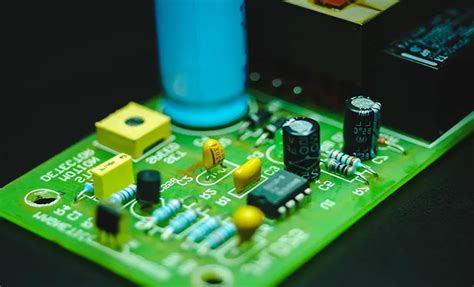
Key Takeaways
When seeking low-volume PCB manufacturing for budget-conscious projects, understanding the balance between PCB manufacturing cost and quality is critical. Start by evaluating PCB manufacturing companies that specialize in small batches (1–5 units), as they often optimize processes for prototyping rather than mass production. Prioritize manufacturers offering transparent pricing structures—look for those that itemize expenses like materials, layer counts, and surface finishes to avoid hidden fees. For instance, some providers combine competitive per-unit pricing with rapid turnaround times, ideal for iterative design testing.
Consider the table below for a quick comparison of key factors:
| Factor | Consideration |
|---|---|
| Minimum Order Quantity | Opt for suppliers with no MOQ requirements to align with tight budgets. |
| Lead Time | Aim for 24–72 hour turnaround to accelerate development cycles. |
| Material Options | Verify availability of cost-effective substrates like FR-4 for rigid prototypes. |
| Testing Services | Ensure basic electrical testing is included to minimize post-production defects. |
To reduce PCB manufacturing cost without compromising reliability, simplify designs where possible—fewer layers and standard finishes like HASL can lower expenses. Partnering with a PCB manufacturing business that offers design-for-manufacturing (DFM) feedback helps avoid costly revisions. Additionally, consolidate orders for multiple prototypes to benefit from bulk discounts, even in small batches. Always confirm whether assembly services (e.g., solder paste stencils) are bundled, as separate fees can inflate budgets. By focusing on these strategies, you can achieve cost-effective, high-quality prototypes tailored to early-stage validation needs.

Understanding Low-Volume PCB Prototyping for Budget-Conscious Projects
When working on PCB manufacturing for prototypes or early-stage designs, balancing cost and quality becomes critical—especially when your budget is tight. Low-volume PCB prototyping typically involves producing small batches (1–5 units), making it ideal for testing concepts, refining designs, or preparing for field trials. For startups and engineers, this approach minimizes upfront expenses while allowing iterative improvements. However, navigating PCB manufacturing costs requires understanding how factors like material selection, layer count, and turnaround time impact pricing. Reputable PCB manufacturing companies often offer tiered pricing models for small batches, ensuring affordability without compromising essential features like solder mask quality or trace precision.
To keep costs low, focus on simplifying your design early. Reducing layers, avoiding ultra-fine pitch components, and standardizing board dimensions can lower PCB manufacturing business expenses significantly. Many providers also offer design-for-manufacturability (DFM) feedback to help you avoid costly revisions. While comparing PCB manufacturing costs, prioritize transparency—hidden fees for tooling, testing, or shipping can inflate budgets unexpectedly. Some manufacturers bundle these services into their base pricing, while others charge separately, so clarify terms upfront.
Another key consideration is material choice. FR-4 is the most cost-effective substrate for rigid prototypes, but specialized materials (e.g., high-frequency laminates) will raise costs. For field testing, durability matters, but over-engineering a prototype can strain your budget unnecessarily. Partnering with a PCB manufacturing specialist that understands small-batch needs ensures you get functional boards quickly without overspending. Finally, verify turnaround times—some companies expedite orders for a premium, while others include fast production in their standard rates. By aligning your priorities with a manufacturer’s strengths, you can achieve reliable results even with limited resources.
Key Factors to Consider When Choosing a Low-Volume PCB Manufacturer
When selecting a PCB manufacturing partner for low-volume prototyping, prioritize companies that align with your budget and technical requirements. Start by evaluating their expertise in handling small-batch production (1–5 units), as not all PCB manufacturing companies specialize in cost-effective solutions for tiny orders. Look for providers that streamline workflows to minimize PCB manufacturing cost without cutting corners—this includes optimizing panel utilization or offering standardized material options. Turnaround time is another critical factor: faster lead times reduce project delays, but ensure speed doesn’t compromise quality.
Verify if the manufacturer supports your design complexity, such as multilayer boards or specific surface finishes, as limited capabilities might force costly redesigns. Transparent pricing models are essential—ask for detailed breakdowns to avoid hidden fees for tooling, testing, or revisions. Reputable PCB manufacturing businesses often provide free design-for-manufacturability (DFM) checks to catch errors early, saving you time and money.
Quality certifications like ISO 9001 or IPC standards indicate reliability, especially for prototypes intended for field testing. However, balance certification costs against your budget; some startups or tight-budget projects may prioritize affordability over premium certifications. Customer support responsiveness also matters—quick communication ensures smoother iterations during early-stage design validation.
Finally, consider scalability. Even if you’re ordering just a few units now, partnering with a PCB manufacturing provider that can scale up production later simplifies future transitions. By weighing these factors, you’ll find a partner that delivers both affordability and reliability for your prototyping needs.

Top Manufacturers Offering Small-Batch PCB Production (1-5 Units)
When searching for PCB manufacturing services tailored to small-batch prototyping (1–5 units), you’ll find several PCB manufacturing companies that specialize in balancing affordability with quality. These providers focus on minimizing PCB manufacturing cost while ensuring reliability, making them ideal for startups, hobbyists, or teams testing early-stage designs. For example, some manufacturers use shared panelization techniques to reduce material waste, passing savings to clients without compromising turnaround times. Others offer modular pricing, allowing you to pay only for the features you need—like basic FR-4 substrates or optional finishes such as HASL or ENIG.
A critical advantage of partnering with specialized PCB manufacturing business providers is their streamlined processes for low-volume orders. They often prioritize quick-turn prototyping, delivering boards in as little as 24–48 hours for simple designs. Look for manufacturers that provide free design reviews—this ensures your files meet fabrication standards upfront, avoiding costly revisions. Additionally, many companies bundle assembly services, integrating components like resistors or microcontrollers to save time during field testing.
Tip: To further cut costs, consider using standard board sizes and minimizing layer counts (e.g., 2-layer instead of 4-layer) unless your design demands higher complexity.
Hidden fees can inflate PCB manufacturing cost, so scrutinize quotes for charges like setup fees, tooling, or expedited shipping. Reputable manufacturers often waive these for small batches, focusing instead on transparent per-unit pricing. For rigid prototypes, verify if the provider offers cost-effective testing options, such as automated optical inspection (AOI), to catch defects early. By aligning your requirements with a manufacturer’s core strengths—whether it’s rapid prototyping or flexible assembly—you can achieve reliable results without exceeding tight budgets.
Cost-Effective Solutions for Rigid Prototypes and Field Testing
When working with PCB manufacturing for rigid prototypes and field testing, balancing affordability and functionality is critical—especially for projects with tight budgets. Many PCB manufacturing companies specialize in low-volume production (1–5 units), providing tailored solutions that avoid the high upfront costs of mass production. By leveraging economies of scale and optimized workflows, these manufacturers reduce PCB manufacturing cost while maintaining quality, making small-batch fabrication accessible even for early-stage testing.
A key advantage of partnering with specialized PCB manufacturing business providers is their ability to streamline processes like material selection and layer stacking. For example, opting for standard FR-4 substrates instead of high-frequency alternatives can cut expenses without compromising structural integrity for most rigid prototypes. Additionally, simplifying designs—such as reducing the number of layers or avoiding ultra-fine trace widths—lowers material waste and machining time. Design-for-manufacturability (DFM) checks offered by many vendors further ensure your prototype aligns with cost-efficient production parameters.
Field testing demands durability, so prioritize manufacturers that validate designs through rigorous electrical testing and thermal stress analysis. While these services may add marginally to the PCB manufacturing cost, they prevent costly redesigns later. Some providers bundle testing into base pricing, offering better value for small batches. To maximize savings, consider panelization (grouping multiple designs on a single board) or opting for lead-free finishes only when necessary.
Finally, transparency in pricing is non-negotiable. Reputable PCB manufacturing companies provide detailed quotes upfront, avoiding hidden fees for tooling, setup, or expedited shipping. By clarifying these details early, you can allocate your budget more effectively and focus on refining prototypes for real-world performance.
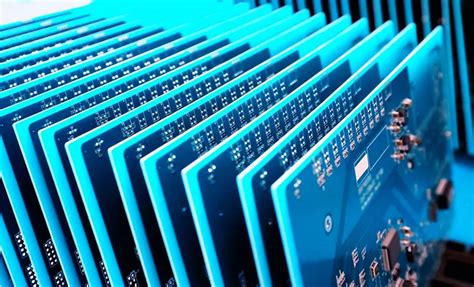
Hidden Costs to Avoid in Low-Volume PCB Fabrication
When working with PCB manufacturing companies for small-batch projects, it’s easy to focus solely on upfront PCB manufacturing cost while overlooking hidden expenses that inflate your budget. Material selection is a common pitfall—specialty substrates or high-frequency laminates might seem necessary but can dramatically raise costs. Instead, verify whether standard FR-4 meets your design requirements. Similarly, unnecessary layer counts or overly complex surface finishes like ENIG (Electroless Nickel Immersion Gold) might be suggested, but simpler finishes like HASL (Hot Air Solder Leveling) often suffice for prototypes.
Another overlooked expense is PCB manufacturing testing fees. While skipping electrical testing or automated optical inspection (AOI) might lower initial quotes, it risks undetected defects, leading to costly rework. Always clarify what’s included in the base price and prioritize critical tests for reliability. Tooling charges, such as stencil or fixture setup fees, can also add up. Some manufacturers waive these for repeat orders, so inquire about long-term partnerships if you plan multiple iterations.
Shipping and handling are rarely discussed upfront. Expedited turnaround times or international shipping for materials like specialty solder masks can quietly double your PCB manufacturing business expenses. Opt for standard lead times and local suppliers where possible. Lastly, ensure your design files are error-free before submission. Re-spins due to design flaws or formatting issues (e.g., incorrect Gerber files) waste both time and money. Use free DFM (Design for Manufacturing) checks offered by many PCB manufacturing providers to catch errors early.
By addressing these hidden factors, you’ll maintain tighter control over your budget without compromising the quality of your low-volume prototypes.
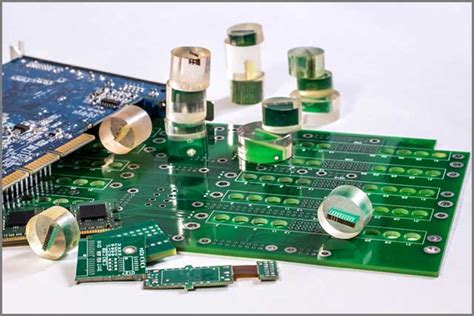
Comparing Pricing Structures: Balancing Affordability and Quality
When evaluating PCB manufacturing options for low-volume prototyping, understanding how pricing structures work is critical to aligning costs with your project’s needs. Most PCB manufacturing companies tailor their quotes based on factors like material selection, layer count, board size, and turnaround time. For small batches (1–5 units), economies of scale don’t apply, so prioritizing transparency in PCB manufacturing cost breakdowns ensures you avoid hidden fees. Look for providers that offer tiered pricing—where basic specs (e.g., FR-4 substrates, 2-layer designs) are priced lower, while advanced features (high-frequency materials, HDI technology) incur incremental costs.
Reputable manufacturers often balance affordability by optimizing panel utilization or offering shared production slots for prototypes. This minimizes waste and reduces per-unit expenses without compromising quality. However, beware of overly aggressive discounts—exceptionally low prices might indicate shortcuts in testing or material quality. To verify value, cross-check certifications (e.g., ISO 9001, UL listing) and read customer reviews about consistency in delivery and performance.
For startups or engineers on tight budgets, negotiating bulk discounts even for small orders can lower PCB manufacturing business expenses. Some providers bundle services like design-for-manufacturing (DFM) checks or free solder mask color options to add value. Additionally, consider modular pricing models where you pay only for necessary features—such as skipping gold plating if surface oxidation isn’t a concern.
Ultimately, balancing affordability and quality hinges on clear communication. Share your project’s requirements upfront, and ask for itemized quotes to identify areas where costs can be trimmed. By partnering with flexible PCB manufacturing companies, you ensure your prototypes meet technical standards while staying within budget constraints.
Streamlining Prototype Assembly for Early-Stage Design Iterations
When refining your design through rapid iterations, efficient PCB manufacturing processes are critical to maintaining momentum without overspending. For early-stage prototypes, partnering with PCB manufacturing companies that specialize in low-volume production ensures you can test and validate designs quickly while keeping PCB manufacturing cost manageable. Start by optimizing your design files for assembly—clear labeling, standardized component footprints, and avoiding overly complex layouts reduce errors and rework. Many manufacturers now offer design-for-manufacturability (DFM) checks as part of their service, helping you identify potential issues before fabrication begins.
Component sourcing plays a pivotal role in streamlining assembly. Opt for readily available parts or work with your PCB manufacturing business partner to substitute hard-to-find components without compromising functionality. Some manufacturers maintain relationships with distributors, enabling faster procurement and reducing delays. For small batches (1-5 units), automated assembly might seem cost-prohibitive, but newer flexible manufacturing systems allow even low-volume orders to benefit from precision pick-and-place machines, ensuring consistency while avoiding time-consuming manual soldering.
Balancing speed and affordability requires transparency in PCB manufacturing cost structures. Look for providers that bundle services like stencil printing, solder paste application, and testing into their base pricing, avoiding hidden fees that inflate budgets. Additionally, modular assembly options let you prioritize critical sections of the board for testing, saving costs on non-essential components during initial iterations. By aligning your workflow with a manufacturer’s capabilities early, you minimize revisions and accelerate the path from prototype to field-ready hardware.
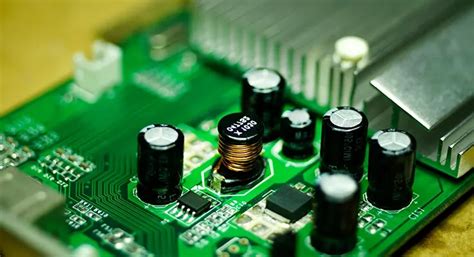
Tips for Reducing Costs Without Sacrificing PCB Reliability
When working with PCB manufacturing on a tight budget, balancing affordability and reliability starts with strategic design choices. Begin by optimizing your board size—smaller designs reduce material usage and lower PCB manufacturing cost. Simplify layer counts where possible; a 2-layer board often suffices for early prototypes and costs significantly less than multilayer alternatives. Use standard materials like FR-4 instead of specialized substrates unless absolutely necessary, as exotic materials can inflate expenses without adding value.
Collaborate closely with PCB manufacturing companies to identify areas where design complexity can be reduced. For example, minimizing via counts, avoiding ultra-fine trace widths, and using standard drill sizes streamline production. Many manufacturers offer design-for-manufacturability (DFM) reviews to catch inefficiencies early, preventing costly revisions. If your project allows, consider panelizing multiple prototypes into a single board to share setup costs across units—this is particularly effective for small-batch orders (1-5 units).
Another strategy is to prioritize functional testing over aesthetic perfection. Minor cosmetic flaws, such as slight solder mask variations, rarely impact performance but can lead to higher rejection rates and costs. Opt for lead-free HASL (Hot Air Solder Leveling) finishes instead of premium options like ENIG unless corrosion resistance is critical. Additionally, verify if your chosen PCB manufacturing business offers bulk pricing for repeat orders or shared tooling discounts for standardized designs.
Finally, avoid over-specifying components or features. For instance, using high-temperature laminates in ambient environments or selecting connectors rated beyond your application’s needs adds unnecessary expense. By aligning your design with real-world requirements and leveraging the expertise of PCB manufacturing partners, you can maintain reliability while staying within budget constraints.
Conclusion
When navigating PCB manufacturing for low-volume projects, balancing affordability and quality hinges on strategic decisions. Choosing the right PCB manufacturing companies requires evaluating their expertise in handling small batches (1-5 units), as not all providers optimize processes for minimal waste or cost-efficient material usage. Prioritize manufacturers that offer transparent PCB manufacturing cost structures, avoiding hidden fees tied to design revisions, expedited timelines, or specialized materials. For startups and budget-conscious teams, streamlined prototyping workflows—such as standardized panelization or pre-approved material libraries—can reduce expenses without compromising reliability. Additionally, collaborating with a PCB manufacturing business that provides design-for-manufacturability (DFM) feedback ensures your prototypes are both functional and economical. By focusing on clear communication, iterative testing, and leveraging competitive pricing models, you can achieve cost-effective field-ready prototypes even with tight budgets. Remember, the goal isn’t just to lower upfront costs but to build a foundation for scalable production as your project evolves.
FAQs
How do PCB manufacturing costs vary for small batches (1-5 units)?
PCB manufacturing costs for small batches depend on material selection, layer count, and turnaround time. Many PCB manufacturing companies offer tiered pricing, where per-unit costs decrease slightly as quantities increase. However, for 1-5 units, focus on providers specializing in low-volume prototyping to avoid inflated setup fees.
What should I prioritize when selecting a PCB manufacturing business for tight budgets?
Look for companies that streamline processes like panelization or use cost-efficient materials without compromising quality. Verify if they offer design-for-manufacturability (DFM) feedback to reduce errors and avoid hidden charges. Transparent PCB manufacturing cost breakdowns are critical to staying within budget.
Can low-volume PCB prototypes match the reliability of mass-produced boards?
Yes, reputable PCB manufacturing providers use the same fabrication standards for prototypes as for larger batches. Ensure they perform electrical testing and quality inspections to catch issues early, saving you from costly redesigns later.
How fast can I expect a low-volume PCB order to be delivered?
Standard turnaround times range from 3-7 days, but expedited options are available. Some PCB manufacturing companies offer same-day quoting to accelerate the process. Confirm lead times upfront to align with your project timeline.
Are there hidden fees in low-volume PCB manufacturing?
Watch for charges like tooling fees, expedited shipping, or custom material sourcing. Reputable providers list all costs upfront. Always request a detailed quote and clarify terms like minimum order quantities to avoid surprises.
How can I reduce PCB manufacturing costs without sacrificing quality?
Optimize your design for simplicity: minimize layers, avoid ultra-fine traces, and use standard materials. Partner with PCB manufacturing businesses that offer bare-board testing and assembly discounts for bundled services.
Explore Budget-Friendly PCB Manufacturing Solutions
Need a partner for your low-volume project? Click here to connect with experts offering competitive pricing, fast delivery, and reliable prototypes tailored to tight budgets.

